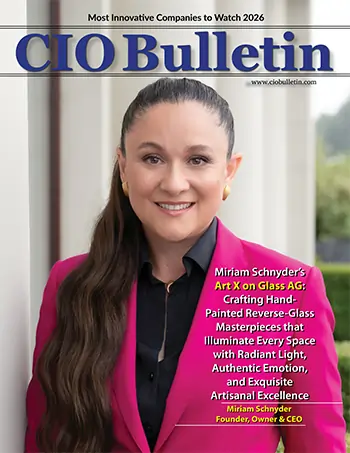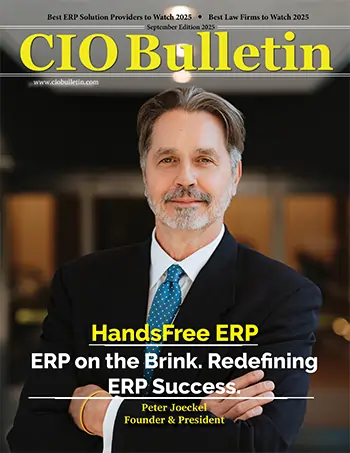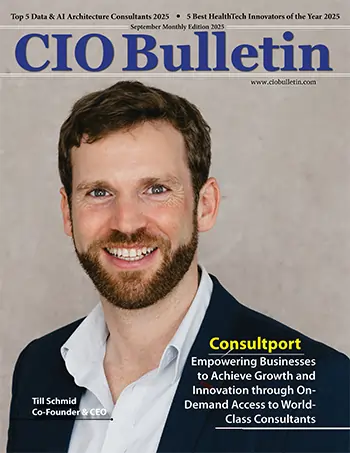Home Platforms News Reframing Product Strategy: An...
News

CIO Bulletin
20 December, 2024
-By Riddhi Bhargava
The ever-evolving landscape of digital product development demands that organizations move beyond traditional, output-driven paradigms toward frameworks that prioritize customer-centric value creation. Outcome-based roadmapping addresses this shift with compelling urgency and clarity. By critiquing outdated feature factory mindsets and emphasizing strategic alignment around measurable customer outcomes, this approach advocates for a systemic rethinking of product management practices.
This article unpacks key insights on outcome-driven product strategy and analyzes their implications through an academic lens. We explore the transition from outputs to outcomes, the restructuring of roadmaps, and the integration of strategic vision with execution. This article aims to ground the concepts of outcome-based roadmapping (OBR) in both theoretical and practical contexts, offering a robust framework for product leaders, strategists, and innovation teams seeking greater coherence and impact in their work.
1.1 The Build Trap and Feature Factory Fallacy
Modern organizations often conflate activity with impact, mistaking the quantity of feature releases for genuine progress. The concept of the "Build Trap," where success is measured by delivery rather than value, exemplifies this output-centric culture. This fosters the so-called "feature factory", a system optimized for throughput rather than customer outcomes (Perri, 2017).
Companies stuck in this paradigm suffer from resource misallocation and failed innovations. As cited, 96% of innovations fail to return their cost of capital (Doblin Group, 2019), and 92% of startups do not survive beyond three years (Genome Report, 2020). The antidote lies in shifting focus from what is being built to why it matters.
1.2 Defining Outcomes in Product Contexts
Outcomes are measurable changes in customer behavior that directly tie to product goals. Unlike outputs (features or releases), outcomes reflect real-world impact and user engagement. For instance, increasing daily active usage or reducing churn rate serves as clearer indicators of success than the number of features shipped (Amazon Marketplace Insights, 2024).
1.3 Strategic Implications of Outcome Focus
Emphasizing outcomes necessitates new planning methods and leadership behaviors. Teams must pivot from solution-centric mindsets to problem exploration and hypothesis validation. Leadership alignment becomes critical to ensure that all teams pursue customer-centric metrics and abandon vanity goals (Smith et al., 2021).
1.4 Feedback Loops and Learning Velocity
To accelerate innovation, feedback loops must be tightly integrated into development cycles. Iterative methods such as design sprints, A/B testing, and continuous discovery enable teams to refine hypotheses and minimize failure rates. This learning velocity becomes a key differentiator in high-performing product organizations (Brown & Martinez, 2022).
2.1 Product Vision as a North Star
A compelling product vision serves as the anchor for all downstream activities. It articulates not only the destination but also the underlying purpose and guiding values. Netflix's 2007 vision is a powerful example: a global entertainment distributor supporting content creators and delighting users in defensible ways. Such visions inspire coherence across teams and decision-making layers (Thompson, 2023).
2.2 SMART Goals and OKRs
Goals derived from the product vision must be specific, measurable, achievable, relevant, and time-bound (SMART). The Objective and Key Results (OKR) framework operationalizes this structure. In the OBR model, objectives serve as goals, while key results embody the measurable customer behavior changes, or outcomes, needed to achieve them.
2.3 Opportunities and Problem Framing
Opportunities are defined as key customer problems, jobs-to-be-done, or gains that, when addressed, drive desired outcomes. Prioritizing these requires deep customer insight and data literacy. Without a thorough understanding of the user context, teams risk building solutions for poorly framed problems.
2.4 Mapping the Journey: From Vision to Features
The OBR framework advocates for cascading alignment across the following hierarchy:
This structure ensures traceability from strategic intent to tactical delivery. Features and stories, often the focus of legacy roadmaps, become downstream artifacts rather than the strategic core.
3.1 Opportunity-Solution Trees
Opportunity-solution trees (OSTs) are visual frameworks that map the relationship between desired outcomes and the problems or opportunities that might achieve them. These trees support generative ideation followed by rigorous validation. Not all ideas are equal, most early-stage hypotheses fail, so OSTs guide teams in prioritizing which ideas to test first.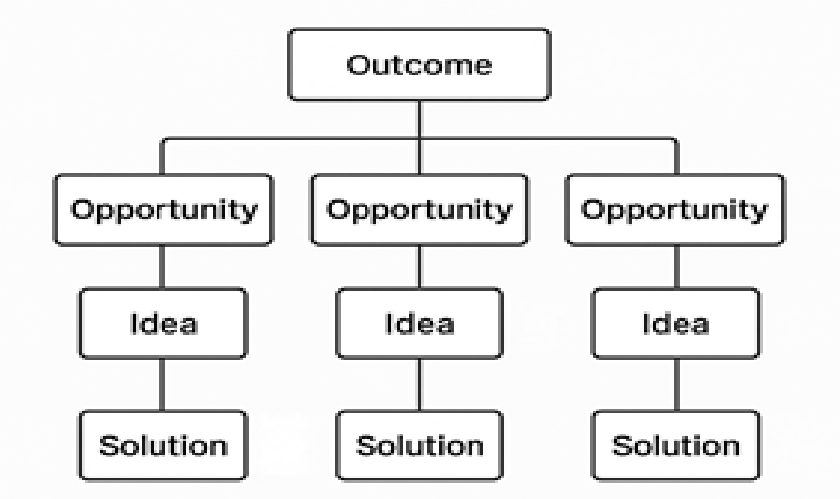
Explanation: OSTs visualize the logical connection between customer needs and possible interventions, facilitating strategic prioritization and hypothesis-driven experimentation.
3.2 Agile Delivery Meets Strategic Thinking
A common pitfall is treating agile ceremonies as sufficient strategy. The OBR approach warns that delivering the wrong features faster still equates to failure. Teams must distinguish between delivery speed and delivering value, and integrate strategic checkpoints into sprints (Lopez & Han, 2023).
3.3 Legacy Roadmap Adaptation
Traditional roadmaps, focused on timelines and features, are inadequate for modern agile teams. OBR suggests that roadmaps evolve into communication tools rather than rigid schedules. Roadmaps should emphasize "Now, Next, Later" framing and clearly distinguish outcomes from outputs.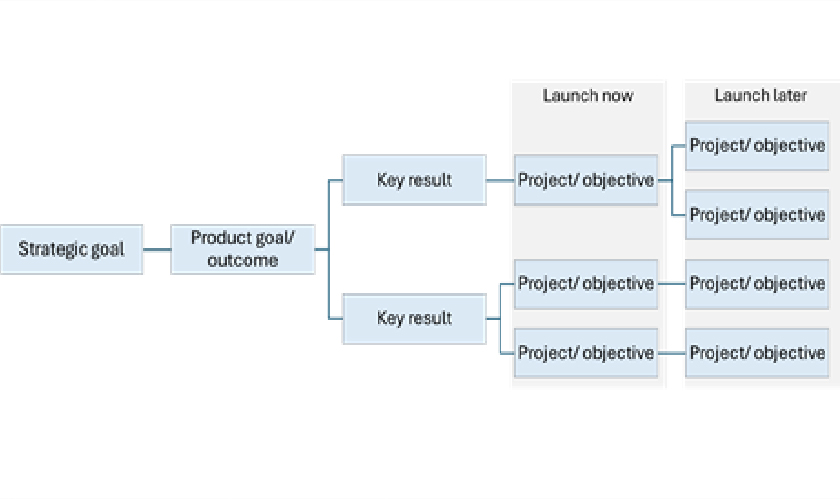
Explanation: This visual shows how an OBR roadmap can present strategic intent across temporal phases while maintaining alignment with validated user outcomes.
3.4 Organizational and Cultural Shifts
Adopting OBR requires changes in leadership behavior, cross-functional collaboration, and a tolerance for ambiguity. Teams must be empowered to say "no" to misaligned work and be rewarded for learning rather than simply delivering. This cultural evolution is arguably more difficult than the tooling or frameworks involved.
4.1 Common Pitfalls in Outcome Design
Teams new to OBR often fall into the trap of vague or unrealistic outcomes. Top-down metrics may be imposed without negotiation, resulting in disempowered teams and low morale. Additionally, overreliance on technology without customer insight often leads to misplaced priorities (Anderson et al., 2022).
4.2 Misaligned Leadership and Command-and-Control Dynamics
Successful outcome-based work hinges on alignment and trust. “Command and control” cultures, where leadership sets arbitrary outcomes without engaging delivery teams, must be avoided. Instead, “mission command” cultures enable teams to self-organize within clearly defined strategic boundaries.
4.3 Measurement Challenges and Validation Gaps
Many teams lack the infrastructure or skills to measure behavior change effectively. Without real-time data and experimentation capabilities, they revert to gut-feel decision-making or vanity metrics. Investing in analytics, instrumentation, and user research is essential to close this gap.
4.4 Sustaining OBR Momentum
The transition to OBR is not a one-time shift but an ongoing discipline. It requires iterative refinement, executive sponsorship, and systems thinking. Celebrating incremental outcome wins and sharing stories of customer impact can reinforce the practice across teams.
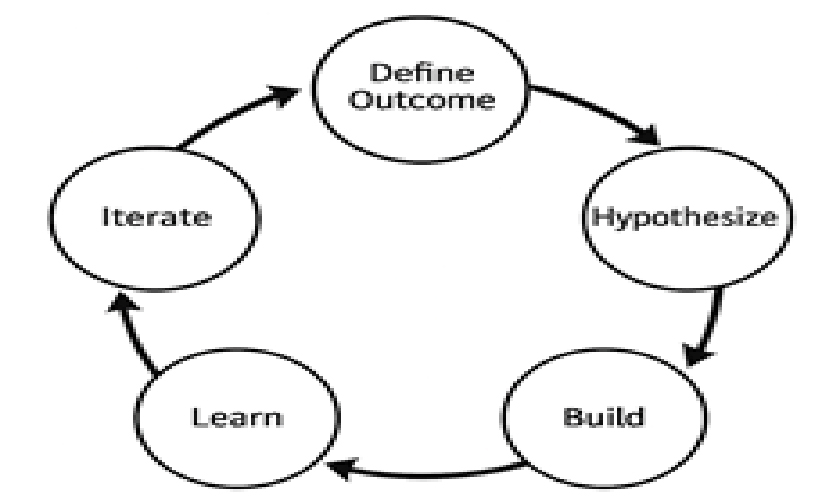
Explanation: This loop reinforces the core learning engine of OBR, showing how validated learning informs each subsequent decision in the product lifecycle.
4.5. Impact on Career Growth for Product Managers
Outcome-based roadmapping shifts product manager growth from output delivery to proven impact. Career advancement now centers on outcome ownership and evidence of customer value. Data-driven evaluation values skills like experimentation, discovery, and cross-team influence. Organizations must align rewards and competencies with measurable, meaningful outcomes.
Outcome-based roadmapping represents a strategic inflection point in the evolution of product management. By shifting focus from outputs to outcomes, organizations can unlock greater alignment, customer value, innovation resilience, and cultivate more meaningful individual and team performance trajectories. As this article has shown, implementing OBR requires more than new artifacts, it demands a culture of learning, transparency, and strategic coherence.
This shift also redefines how organizations approach growth conversations. Product managers who drive validated outcomes, rather than merely execute output, emerge as stronger candidates for advancement. Outcome-oriented frameworks provide a blueprint not only for product strategy, but for professional development. By emphasizing vision, accountability, and measured impact, these models help teams and individuals grow in tandem. As digital ecosystems grow more complex, those who can connect strategic intent to behavioral results will be best positioned to lead and deliver lasting impact.
Riddhi Bhargava has led enterprise product strategy at Walmart, SAP, and Cvent, with a focus on building user-centered platforms that scale. She brings clarity, cross-functional influence, and a bias for impact to everything she builds. Her writing explores themes of human-centered design, strategic product thinking, and leading without authority.
